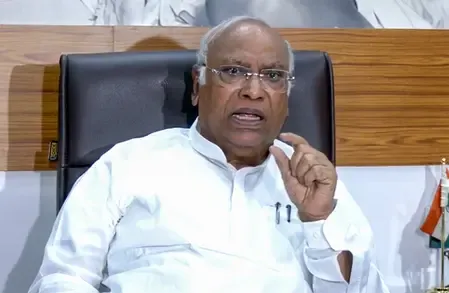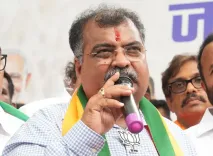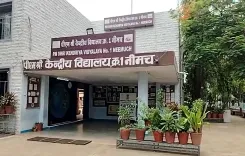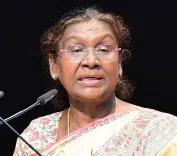Have Failures, Frauds, and False Claims Marked 10 Years of Digital India?

Synopsis
Key Takeaways
- Digital India has faced significant criticism from the opposition.
- Only 35% of targeted villages are connected to broadband.
- Concerns over data security are rising, with millions of cyberattacks reported.
- Many Indians remain digitally illiterate, particularly in rural areas.
- The initiative has been criticized for excluding marginalized communities.
New Delhi, July 1 (NationPress) On the occasion of the tenth anniversary of the Modi government's flagship initiative, 'Digital India', Congress President Mallikarjun Kharge vehemently criticized the program on Tuesday, claiming that it has resulted in more failures and fraudulent practices than true digital empowerment.
In a pointed message on his X account, Kharge accused the Modi administration of making grandiose assertions while concealing significant flaws in execution, digital accessibility, and data security.
“The rhetoric surrounding the Modi Government's 'Digital India' initiative is tainted by unfulfilled promises, digital exclusion, and diminished transparency,” wrote Kharge.
Citing official statistics, Kharge noted that of the 6.55 lakh villages targeted for broadband under the BharatNet initiative, only 35 percent have been connected to date, despite the deadline being extended eight times over 11 years.
“Only 766 Gram Panchayats — merely 0.73 percent — have functioning Wi-Fi services,” he added.
Kharge also criticized BSNL's performance, highlighting that despite receiving three revival packages totaling over Rs 3 lakh crore since 2019, the PSU has failed to set up 1 lakh 4G towers.
Additionally, he pointed out that BSNL and MTNL’s debts have surged by 291.7 percent and 136.2 percent respectively, from 2014 to 2024.
Kharge's critique extended beyond infrastructure failures, as he accused the Modi government of excluding the underprivileged and marginalized from the digital revolution.
Referencing data from the National Sample Surveys, he claimed that 75.3 percent of Indians aged over 15 remain unfamiliar with computer usage, a figure that rises to 81.9 percent in rural areas.
“Currently, 54 percent of government schools lack Internet access, 79 percent do not have computers, and 85 percent are without smart classrooms,” he mentioned.
Expressing concerns over data security, Kharge stated that India has experienced over 10 crore cyberattacks since the Pahalgam terror incident. CERT-In statistics indicated a 76 percent increase in cybersecurity incidents from 2020 to 2024.
He also accused the ruling party of eroding transparency, pointing to the weakening of the RTI Act and its replacement with a “flawed” Data Protection Law.
Taking a jab at the BJP for claiming credit for past government initiatives, Kharge reminded that it was the UPA administration under Dr. Manmohan Singh that established the groundwork for Aadhaar, UPI, and Direct Benefit Transfers.
“Instead of glossing over national achievements and seeking credit for 10 years of Digital India, perhaps you should reflect on the numerous 'failures' and 'frauds' imposed by your administration,” Kharge concluded.






